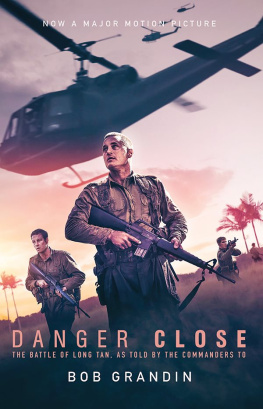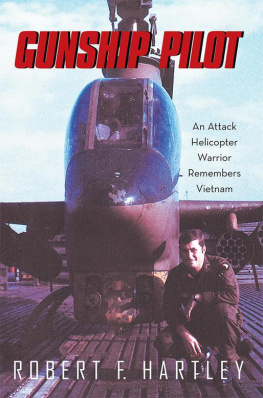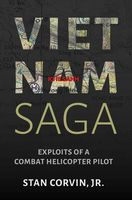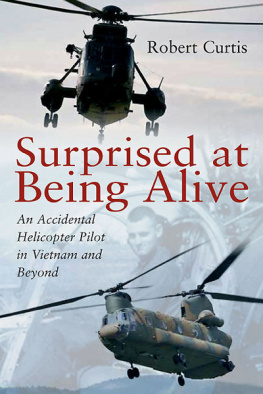

Copyright Bob Grandin
First published 2019
Copyright remains the property of the authors and apart from any fair dealing for the purposes of private study, research, criticism or review, as permitted under the Copyright Act, no part may be reproduced by any process without written permission.
All inquiries should be made to the publishers.
Big Sky Publishing Pty Ltd
PO Box 303, Newport, NSW 2106, Australia
Phone: 1300 364 611
Fax: (61 2) 9918 2396
Email:
Web: www.bigskypublishing.com.au
Cover design and typesetting: Think Productions
Proudly printed and bound in China by Hang Tai Printing Company Limited

For Cataloguing-in-Publication entry see National Library of Australia.
Creator: Bob Grandin
Title: Answering the Call: Life of a Helicopter Pilot in Vietnam and Beyond
ISBN: 978-1-922265-40-1

I dedicate this book to all the veterans who 'Answered the Call' of duty and then struggle as they attempt to settle back into civilian life.
CONTENTS
NEWSPAPER ARTICLES
ACKNOWLEDGMENTS
The drive to write this book began after I had completed the manuscript for The Battle of Long Tan as told by the Commanders to Bob Grandin by Allen & Unwin. I commenced a Bachelor of Arts in Creative Writing at the University of the Sunshine Coast and in my third year enrolled in a unit that allowed me to focus on writing a manuscript. I initially transcribed my memory of day to day activity from my logbook, but my supervisor, Dr James Forsyth, encouraged me to expand the writing to include my life after Vietnam as he recognised a colourful, if troubled, set of experiences. My father, a Regular Army Major in the sixties, had saved news cuttings about me that appeared in the newspapers, despite my being with the enemy - the RAAF and he had also saved the RAAF News, that carried stories about Vietnam. I recognised that I could dovetail my experiences with these stories and I am thankful that he saved these cuttings. As I reworked the manuscript, I recognised that I should also align my flying with the names of various Operations that were being carried out by the Task Force. The use of Ian McNeills To Long Tan: the Australian army and the Vietnam war 1950-1966 allowed me to recognise the relationship between his descriptions of helicopter involvement and my logbook. I wish to acknowledge my Flight Commander in 9Sqn Vietnam, Laddie Hindley, who provided a mentoring and stabilising influence to my life.
I must acknowledge my long-suffering wife, who supported me in my many years of searching and unsettled existence. Together with my children, we explored several adventures that coloured our life, but did not provide the answers. Her understanding and acceptance have been critical to my realising my potential to write this story.

This book was the winner of the RAAF Biennial Heritage Literature Award 2018.
This book by Bob Grandin is a very important manuscript. In an era in which we have become all too aware of the impact of war on the young men and women deployed on operations, Bob reminds us that the enduring impact of conflict is not a new phenomenon but one which has been with us for generations. Our returned servicemen and women all have a life after deployment, sometimes remaining in uniform, but for most, sooner or later, as civilians. They marry, have children, manage careers and have to deal with the challenges life brings. For many, the spectre of war is never far away. It hovers in the background, forever looking over their shoulder, sometimes as a benign presence, at other times something far more sinister. Appreciating this experience, knowing how different the effects can be for each individual person who has witnessed war is important for all of us to understand. Bobs story of his deployment to Vietnam flying Iroquois helicopters with the Royal Australian Air Force (RAAF) is a window for us to look through to gain an empathetic appreciation of the experience of our veterans.
The RAAF Iroquois deployment to the Vietnam War over the years 1966-71 was shaped by three factors, which all combined to influence the experience of Bob Grandin and that of his fellow aircrew of No 9 Squadron who first deployed into Vietnam in June 1966. The first factor was the relatively new nature of helicopter operations in the counter-insurgency operations so typical of that war. While the RAAF had in fact deployed a squadron of Iroquois to Malaya for operations against the communist terrorists during the years 1962-66, the low intensity nature of the conflict and the relatively benign operating environment did not truly provide significant lessons or provide a direction to guide further training and development of the use of helicopters in conflict. This is a salient point. The nature of the war in Vietnam was new to the RAAF, and this put pressure on the young aircrew like Bob to rapidly assess and adapt to the trying conditions of the counter-insurgency war.
While not the first wartime deployment of RAAF helicopters, when the personnel of No 9 Squadron arrived in Vietnam in 1966, they were to all intents and purposes entering into unknown territory. This situation was not helped by the second factor. The RAAF had began helicopter operations in 1947 in a role which could best be described as search, rescue and rear area logistics support. That the most prolific user of helicopters in the early years was the RAAFs Aircraft Research and Development Unit, would suggest that there had been only limited study since 1947 in the development of helicopters as a combat capability. This was also a characteristic of the senior officers of the RAAF at the time. As helicopters had only been a minor force component prior to the acquisition of the Iroquois in 1962, no helicopter aircrew had yet to reach a senior position within the Air Force who might have provided guidance from a position of authority. It was once again a necessity of the war that it would fall to the aircrew of No 9 Squadron to educate their senior command on the demands of rotary wing operations in conflict even as they themselves were learning.
The third factor which influenced No 9 Squadrons war was one common for all Australian units at the time. Our commitment to the war was small in comparison to the American effort. In 1966 US forces counted their helicopter fleets in the thousands, whereas Australias was so small it was only able to commit eight Iroquois to the conflict. This was not an example of parsimony on the part of the RAAF, rather a reflection that there were simply no additional helicopters available to send. The small numbers of airframes meant that the tactics and large scale of operations suitable for US forces were simply out of reach for the far more modest Australian Task Force. Once again, it was the aircrew of No 9 Squadron who had to develop the plans and tactics suitable for small force operations.
The limitations and challenges faced by No 9 Squadron were not always appreciated by other elements deployed into theatre at the time. It was into this challenging environment of the conflict in Vietnam that Bob Grandin arrived in June 1966 as a young helicopter pilot. His story of that war and that of his later life is a worthy story and part of RAAF heritage. It was for this reason that Bob Grandins Answering the Call My Life as a Helicopter Pilot in Vietnam and Beyond is such a worthy winner of the 2018 RAAF Heritage Award for Literature.
Next page













